- Smart Living

Native Hawaiians Are Asking For a Reduction in Tourism, and We Should Listen
Published on 9/2/2021 at 3:35 PM
:upscale()/2021/09/02/772/n/48330827/tmp_ZSrzeY_8d61ca2d19b51ba3_GettyImages-176612815.jpg)
In 2014, my family traveled to the island of Oahu in Hawaii. I fondly recall climbing the dormant volcano Diamond Head, attending my first luau, and searching for a humuhumunukunukuapua'a while snorkeling in Hanauma Bay. All things considered, we were a typical "tourist family" seeking both adventure and knowledge as we navigated the island's hotspots.
Five years later, we were privileged enough to return, and this time we attempted to broaden our horizons and look for beaches , trails, and restaurants that were frequented by more locals than tourists. This approach to traveling has become an increasingly popular option for travelers today. Though this may seem harmless, there's been mounting concern among Native Hawaiians and locals about the ethics and sustainability of these tourism trends, and those feelings have only been exacerbated by the pandemic.
According to the 2021 Hawaii Tourism Authority's Resident Sentiment Survey, only 53 percent of Hawaiians feel that tourism has been more beneficial than harmful . "It's the lowest measure since we started taking the survey in 1988," Chris Kam, the president and COO of Omnitrak, told the Honolulu Star-Advertiser . Kam explained that some of the primary issues residents are facing include overcrowding, damage to the environment, and higher cost of living. Compounded together, it makes sense that attitudes toward tourism have become more and more negative, hence the calls for a decrease in travel.
According to the 2021 Hawaii Tourism Authority's Resident Sentiment Survey, only 53 percent of Hawaiians feel that tourism has been more beneficial than harmful.
In 2019, a record 10 million tourists visited Hawaii , a group of islands with a population of 1.5 million. A year after the pandemic halted travel, 2021's numbers are quickly approaching — and even surpassing — that rate, creating issues with overcrowding.
This summer, for example, the islands experienced a rental-car crisis . Companies like Hertz and Avis had sold portions of their fleets during the pandemic to save cash, decreasing the number of cars available by more than 40 percent , according to the Hawaii Tourism Authority (HTA). Then, as travel resurged, the issue of supply and demand created astronomical rental prices that were capping at $700 per day, compared to the prepandemic $50.
Shocked, some tourists began renting U-Hauls instead. This transportation loophole left a number of offices unable to provide equipment to locals who needed to move, prompting the HTA to release a statement saying they "[do] not condone visitors renting moving trucks and vans for leisure purposes."
The displacement of Native Hawaiian people has been a harmful runoff effect of overcrowding for years. Micah Doane, cofounder of the beach-cleaning nonprofit Protectors of Paradise, told The Guardian that his grandmother's family was evicted from the Makua Beach area during World War II so a military training facility could be built. Similarly, the building of luxury hotels has also been used to displace locals. Today, places like Makua Beach are frequented by resort guests who disregard the rules and leave behind excess waste. "You see every day these disrespectful people come and do whatever they want . . . It's to the point where it's kind of hurt an entire community," Doane said.
The pandemic had returned a sort of peace to the islands in which nature and wildlife were able to thrive. Without the usual influx of tourists, researchers from the University of Hawaii were able to see clearer waters, schools of larger fish, and monk seals at Hanauma Bay for the first time in years. Kyle Kajihiro, an activist and lecturer at the University of Hawaii at Manoa, told The New York Times that tourists tend to treat the islands like a "play land" and ignore their history and the residents' social-justice and environmental concerns. That's why we too often see trash left on beaches , coral reefs damaged by unapproved sunscreens, and sacred sites disrespected.
If not for the fact that countless endangered and threatened plant and animal species call the islands home, tourists should care about and respect the environment simply because Natives and locals are asking them to. Resorts are often owned and run by non-Hawaiians, whose interest in purchasing property (commercial or otherwise) is largely responsible for the state's high cost of living. Meanwhile, Native Hawaiians are disproportionately employed by the tourism industry in low-paying service jobs.
It's important to remember that as tourists, we get to experience the best our destination has to offer without dealing with the realities and stresses of everyday life for those who call Hawaii home.
During an interview with Hawaii News Now , Lawrence Boyd, an economist and associate specialist with the University of Hawaii Center for Labor Education, touched on the rampant economic inequality in Hawaii. "Basically what Hawaii has become is a preferred place for the international 1 percent to buy property ," he said. Today, the median price for a single-family home in Honolulu sits at $992,500 , while the median household income in Honolulu is $87,470 .
Together, it's easy to see how these conditions have led to Hawaii having the highest rate of homelessness per capita in the nation , with Native Hawaiians being disproportionately affected. "There historically hasn't been enough consideration for how tourism and tourists can contribute to making life sustainable and really livable for the locals who serve them here," Bryant de Venecia, a communications organizer for the workers' union in Honolulu, Unite Here Local 5, told The New York Times .
It's important to remember that as tourists, we get to experience the best our destination has to offer without dealing with the realities and stresses of everyday life for those who call Hawaii home. So before jumping on the next plane to experience your own White Lotus -style vacation , take some time to reflect on the role you would play on the islands and how that would affect the Native population and environment. As tourism continues to evolve based on people's needs, one of the best things we can do as visitors is respect the wishes of the locals who want to preserve their community, culture, and environment.
- United States
- Summer Travel
- United States
The Case for Caps: Overtourism in Hawaii
In January 2022, the Hawaii Tourism Authority (HTA) marked the first time Native Hawaiians— kanaka maoli —comprised a majority of its 12-member board of directors. As tourism represents the largest industry in Hawaii, around 21 percent of the state’s economy, this situation provided an opportunity for much greater influence and input from kanaka maoli on the policies that effectively determine the fate of their islands. In particular, the Board was exploring changes in fees, reservations, and education policy. At the heart of these changes, the Board discussed the fundamental issue of their mission : Their primary focus shifted from “marketing and brand management” to “destination management.” Through their Destination Management Action Plans (DMAPs), they aim to “rebuild, redefine and reset tourism’s direction,” with a “ focus [on] stabilization, recovery, and rebuilding. ” Unfortunately, these goals still fail to address the fundamental problem of tourism in Hawaii: The islands, their environment, and infrastructure cannot support the sheer number of tourists visiting the islands. To address this, the State of Hawaii must cap the number of visitors it allows into the islands.
Within the United States, Hawaii is one of the most popular tourist destinations. Despite its relatively modest population, Honolulu is the seventh most-visited city in the United States, with a record 2.75 million tourists in 2019. At the time, around 216,000 jobs were directly involved in or depended on the tourism industry. The surplus of tourists in 2019 allowed the State of Hawaii to raise over two billion dollars in taxes, but these benefits aren’t without their consequences.
While tourism is the largest sector of the state’s economy, it is also the root cause of many of Hawaii’s fundamental problems. Tourists, who outnumber locals seven to one, severely strain the infrastructure designed for Hawaii’s small population. Perhaps the lack of water best illustrates this phenomenon. Currently, tourism accounts for 44.7 percent of total water consumption. While local residents suffer from droughts and face restrictions on watering their lawns or washing their cars, the tourism industry enjoys seemingly unfettered access to Hawaii’s water supply. The tourism industry also consumes a significant amount of energy. Researchers from the University of Hawaii at Mānoa found that at one point, hotels and their guests consumed around 60 percent of Hawaii’s fuel and electricity. Even facing the challenges to the tourism sector during the coronavirus pandemic, in 2020, hotels alone were responsible for 8.7 percent of electricity consumption on the island of Oahu. Tourists are also responsible for propagating an already dire affordable housing crisis. For decades, tourists have participated in illegal short-term vacation rentals, eager to capitalize on the islands’ popularity. Expensive rentals on Airbnb and VRBO, and rising prices of homes, condos and apartments make housing practically unaffordable for local communities. Even with surplus taxation from the tourism sector, most of the money from tourism unfortunately leaves the islands in the hands of shareholders of the Hilton, Marriott, and other multinational hospitality companies.
These issues led resident sentiment to turn on tourism in recent years. During Hawaii’s strict Covid-19 policies, some residents claimed that they “got their islands back” on account of the lack of tourists. But when the islands reopened, many called for continued controls on tourism. In July 2021, the Mayor of Maui, for example, asked airlines to pause their post-lockdown frenzy of flights. An additional 2022 survey found that 67 percent of Hawaii residents believed that their island was “being run for tourists at the expense of local people,” and 66 percent supported halting approval of new hotels, condos, and timeshares. This shift in attitude served as an inspiration for the HTA’s new destination management vision.
One of HTA’s new destination management policies is educating tourists on the concepts of traveling pono (exploring with care) and mālama (to take care of). This change, however, arguably does nothing substantial to curb tourism’s greater effects. A recent effort by Hawaiian Airlines, for example, displayed a five minute video on being a “good tourist,” full of seemingly obvious reminders such as not approaching endangered species. But recent air incidents (such as Southwest Flight 1380, where passengers didn’t know how to use oxygen masks properly) illustrate that many people likely do not pay attention to the in-flight safety briefings. Most importantly, these “crash courses” fail to consider that even educated tourists are still tourists.
Education isn’t the only nonanswer being propagated in discussions surrounding tourism in Hawaii. One popular policy pushed by activists and politicians is the instatement of a tourist “green fee,” a $50 per visitor fee that would fund environmental conservation. This policy has already been implemented in other destinations in the Pacific, but their success is questionable. In the Micronesian nation of Palau, for example, a $100 “Pristine Paradise Environmental Fee” added to the cost of flights had little observable effect on the trend of tourism in Palau. In Hawaii, a territory that receives an average of 195 percent more (or an average of 7.45 million more) tourists a year than Palau, a green fee would certainly bring in revenue –about $400 million based on 2019 numbers–but would not do much to address the sheer number of tourists the islands see every year.
Ultimately, the problem lies in the proximity that the mainland United States has to the island, facilitating the massive influx of tourists. Even amid a pandemic, visits to Hawaii skyrocketed when tourism reopened . Faced with a lack of hotel rooms and rental cars, tourists even resorted to renting out U-Hauls and camping on the beach, while local residents were ordered to decrease their water usage to provide for the resorts. No matter the barriers, economic or otherwise, tourists will flock to Hawaii. Ultimately, the solution to Hawaii’s tourism problem is for the government to step in and limit the amount of tourists allowed to travel to the islands.
The most straightforward way for the government to limit tourists would be supplementing the proposed “green fee” with a “green cap” on tourists, a policy that has already been implemented in Bhutan . The HTA and private organizations are already pursuing some similar policies on a smaller scale by enforcing a reservations policy for beaches and state parks in the islands, limiting the number of visitors to popular sites like Diamond Head. According to the CEO of HTA John De Fries, limiting visits to state parks reduces the daily tourist strain on these locations, “ protecting its natural environment and cultural sites.” A similar statewide implementation would reduce the strain on the existing infrastructure. Limiting visitors to Hawaii, however, does raise a cause for concern. As the largest single sector of Hawaii’s economy, a downsizing of tourism would have consequences for the state’s 242,000 employees in tourism, and could send a ripple effect through its connected industries.
Hawaii’s current relationship with tourism is unsustainable for the islands and their residents. But despite the well-intentioned efforts, policies, and proposals of the Tourism Authority and activist groups, these fail to address the root of the problem: tourists put immense pressure on Hawaii’s modest infrastructure–whether it be roads, water, or energy–and educating them or making them pay a fee does not change this. Ultimately, Hawaii must be seen through the words of Maui Mayor Michael Victorino: “a community first and a vacation destination second.” The State of Hawaii must put heavier emphasis on its community, even at the detriment of tourism. Until then, maybe rethink your vacation.
- Environment
SUGGESTED ARTICLES
- environment
Leave a Reply Cancel reply
Your email address will not be published. Required fields are marked *
Comment: ">
Community Voice
Hawaii’s Unhealthy Relationship With Tourism
It’s time to shift focus and invest in our own communities, residents and industries.
By Kayte Jones
July 24, 2020 · 6 min read

About the Author

Kayte Jones
Growing up on the windward side of Oahu, I was used to crowds of tourists. I saw a few tourists increase to busloads of tourists over the years.

In the last few years, my family made the decision to move to Big Island, for many reasons. Although it is not the primary reason, I can’t deny that being “priced out” of Oahu was a contributing factor. We moved to the windward side of the island, since that is my comfort zone, where we have found a new home and community that we love.
I couldn’t help but notice the difference in services and infrastructure. I saw the lack of public transportation. There’s a bus system here on Big Island, made up of retired tour buses and City and County of Honolulu buses, that doesn’t run that often or go to most residential areas.

Well, that’s funny. This island is huge. Public transportation would be so beneficial to the residents. Not only would a better bus system create more jobs, it would connect people with more job opportunities in different areas.
I shared my thoughts with a friend who told me, “Well, the county of Hawaii has less tourism, so therefore has less money. What did you expect?”
Abundance Of Opportunity
Recently, I took a trip to the Kona side, which is filled with hotels, strip malls, golf courses, just like Oahu. As I walked through a perfectly manicured strip mall, I felt myself becoming angry and resentful. All of a sudden I felt this boiling resentment. No one invests in locals, the people that actually live here. We only build nice things for tourists.
My “bold and creative” solution for the future of Hawaii is to shift our focus from tourism and invest in our own communities, our own residents and our own industries. Tourism has been profitable for our state. However, the impacts of COVID-19 on tourism highlighted just how completely dependent our state is on tourism — and it’s an unhealthy relationship.
We should continue to attract tourists and profit from it, but we should not be completely dependent on it. It’s time to shift our focus.
Don’t we have more to offer than the exploitation of our land, people and culture? Couldn’t we be a model of sustainability for the future through research of our unique ecosystem and climate? Through developments in agriculture and green energy like solar power, wind power, algae farms and geothermal energy? Couldn’t we be an educational destination through investment and development into our university system?
I recently read an article about opportunity zones in Civil Beat, which stated, “More than two years after Congress created opportunity zones as part of the 2017 Tax Cuts and Jobs Act, business advocates on Hawaii island say there’s frustration among local entrepreneurs about a perceived lack of movement from the state to bring new investment into the island’s economically disadvantaged communities.”
I followed the link and clicked my way to the Factsheets section where there was a handy-dandy break down of “Investment Drivers” for each area there are Opportunity Zones, including Hilo, Kona, Honolulu, Kahului and Molokai. On the factsheet for Hilo, I found multiple “investment drivers” listed: economic, health care, government, education and research, ports and cultural, along with areas, institutions and businesses ripe for investment in each category.
Apparently, there is an abundance of opportunity out there. Imagine my surprise to see all of this opportunity in my own community, listed so neatly on this factsheet.
Hawaii has more to offer than hotels, luaus and Instagram-worthy photos. Our tropical climate and fertile land are ideal for agricultural development, yet we import most of our food. Investing in our agricultural industry would not only shift our focus from tourism and support local farms, but would also help Hawaii to be less dependent on exports for food.
Hawaii’s climate also creates a unique opportunity for our state to be a model of sustainability via research and development into sustainable sources of energy, such as solar power, wind farms, geothermal and algae farms. The University of Hawaii is a land-, sea- and space- grant institution recognized as a research university. Investing in research and education can make Hawaii an educational destination.
Lastly, and most importantly, we can shift our focus from tourism to our people here at home through infrastructure investments. That means that even areas with low tourism rates get nice things too. Why should we expect outside investors to come in and invest in areas of our state that we don’t invest in ourselves?
Not only would strengthening agricultural infrastructure help Hawaii become less dependent on exports, it will keep our money in the state. Every time there is a crisis, or a natural disaster, residents of Hawaii worry about whether or not cargo ships will make it into our harbors. We worry because most of us are accurately aware of our state’s dependence on exports.
I’m not OK with accepting that my new home has less infrastructure because we have less tourists.
While I loved living on Oahu, I love living on Big Island for different reasons. But this move has shown me the differences between an island catered to and funded by tourism and an island sustained by residents. I have no problem going to the post office to get my mail because we don’t have mail service.
I don’t mind that county water isn’t available in many areas. I enjoy living off the water grid and utilizing a catchment system because I want to live sustainably. I don’t mind some unpaved roads. A poor bus system doesn’t bother me, because I have a car.
What I’m not OK with is accepting that my new home has less infrastructure because we have less tourists.
A community’s value is not determined by its average number of tourists. Our state is more than a tourist destination. Our culture is not meant to be marketed and sold. The people of Hawaii are worthy of investments that improve residents’ standard of living, and not just projects that attract more tourists.
We’ve known for decades that we need to diversify our economy to be less reliant on tourism. It’s time to shift our focus to a more sustainable future for Hawaii.
--> Sign up for our FREE morning newsletter and face each day more informed. --> Sign up for our FREE morning newsletter and face each day more informed.
Community Voices aims to encourage broad discussion on many topics of community interest. It’s kind of a cross between Letters to the Editor and op-eds. This is your space to talk about important issues or interesting people who are making a difference in our world. Column lengths should be no more than 800 words and we need a photo of the author and a bio. We welcome video commentary and other multimedia formats. Send to [email protected] . The opinions and information expressed in Community Voices are solely those of the authors and not Civil Beat.
Read this next:

Pritchett: Excess Baggage
By John Pritchett · July 26, 2020 · 0 min read
Local reporting when you need it most
Support timely, accurate, independent journalism.
Honolulu Civil Beat is a nonprofit organization, and your donation helps us produce local reporting that serves all of Hawaii.
Kayte Jones, originally from Oahu, is a resident of the Big Island where she works in the mental health field.
Latest Comments (0)
This article makes a great point but the author forgets that many people today are against progress unless it's progress to build new stores. The NIMBYs and CAVE people do their best to stop progress. They are against geothermal energy, carbon neutral energy, space exploration(from telescopes to space ports), and any other form of progress that would give Big Island a step away from relying on tourism. We sit between a rock and a hard place. Whomever figures out this problem and gets everyone on board will be in the running for the Nobel Prize.
hawaiianreyes · 3 years ago
PLEASE send this thoughtful, well written article to Governor Ige, Lt. Governor Green and all county Mayors!
Jimmy · 3 years ago
Mahalo for this piece.I totally agree we need to move towards self-sustainablilty and protecting this beautiful culture, people and land.
Judy · 3 years ago
About IDEAS
IDEAS is the place you'll find essays, analysis and opinion on every aspect of life and public affairs in Hawaii. We want to showcase smart ideas about the future of Hawaii, from the state's sharpest thinkers, to stretch our collective thinking about a problem or an issue. Email [email protected] to submit an idea.
You're officially signed up for our daily newsletter, the Morning Beat. A confirmation email will arrive shortly.
In the meantime, we have other newsletters that you might enjoy. Check the boxes for emails you'd like to receive.
- Breaking News Alerts What's this? Be the first to hear about important news stories with these occasional emails.
- Special Projects & Investigations What's this? You'll hear from us whenever Civil Beat publishes a major project or investigation.
- Environment What's this? Get our latest environmental news on a monthly basis, including updates on Nathan Eagle's 'Hawaii 2040' series.
- Ideas What's this? Get occasional emails highlighting essays, analysis and opinion from IDEAS, Civil Beat's commentary section.
Inbox overcrowded? Don't worry, you can unsubscribe or update your preferences at any time.
- Share full article
Advertisement
Supported by
In Hawaii, the Search for Sustainable Tourism
John De Fries, the first native Hawaiian to lead the state’s tourism authority, discusses the delicate balance of tourism, culture and the environment — and why he got hooked on the TV show “The White Lotus.”

By Paige McClanahan
When John De Fries’s mother was in high school in the 1940s, she was forbidden from dancing the hula and speaking Hawaiian, the language of her ancestors. The school she attended was for children of Hawaiian descent, but instead of encouraging students to embrace that heritage, it tried to erase it.
“That whole generation was the byproduct of this sweeping Americanization, Westernization,” Mr. De Fries recalled recently. “What’s ironic is that, 51 years later, my mother’s great-granddaughter graduated from the same school. And by then, fluency in native Hawaiian had become a requirement — but it took half a century to get there.”
In September 2020, when Hawaii’s tourism industry was in pandemic-induced free fall, Mr. De Fries took over the top tourism role in his home state, becoming the first native Hawaiian to hold the position. As the president and chief executive of the Hawaii Tourism Authority, he is now responsible for supporting the industry that, before the pandemic, brought in $2 billion in state tax revenue and employed more than 200,000 people.
The position he holds has recently been in flux, Mr. De Fries told me when I reached him on a video call at his home on the Big Island. A few years ago, H.T.A.’s main job was to brand Hawaii and market the islands to potential visitors. The agency still does those things, but these days its official remit has expanded to include natural resources, community — and Hawaiian culture.
Over the course of our conversation, Mr. De Fries, 71, described how the lessons he learned as a child in Waikiki inform his work, what it felt like when Hawaii was empty of tourists and why he got hooked on the television show “The White Lotus,” which takes place in Hawaii.
Our conversation has been edited for length and clarity.
You grew up in Waikiki in the 1950s. How does that experience inform your work?
I was born and raised two blocks from Waikiki Beach, a half-block from Honolulu Zoo, so literally about 2,000 yards from the foot of Diamond Head. The waters there had been my family’s fishing grounds for a century before I was born, and when I was growing up, we would fish them every week. What I learned as a kid was that Waikiki was first a source of food, then it was a source of medicine — from seaweeds and sea urchins and other things — and then it was a place of recreation and well-being. There was a hierarchical order there: food, medicine, recreation. But in the development of Waikiki, we inverted that order, and we put recreation on top.
So as we think about creating a regenerative model for tourism, we have to go back to lessons that we were learning back in the day. Native Hawaiians always understood that their ability to sustain life in the middle of the Pacific had to do with living inside the boundaries of the natural environment. So when I look at the future and the opportunities we have for tourism, I don’t see how we do it at scale unless we start to evolve a 21st-century version of that kind of thinking. Not everybody in the industry is ready for that, but I don’t think we have a choice.
Did the pandemic shift local attitudes toward Hawaii’s tourists?
We ended 2019 with a record number of visitor arrivals: 10.4 million. And six months later, in July 2020, visitor arrivals were hovering around zero. I remember I was standing on Kalakaua Avenue in Waikiki one night at 9 p.m., and there was not a single moving vehicle in either direction. It felt like a film set, frankly — it was eerie. An economic collapse of that scale is like a large building collapsing in on itself, and people are trapped underneath. People are getting hurt.
But at the same time, for the local community, it was euphoric, right? No traffic. No crowds at the beach. The beach parks were open. The forest trails were open. And local residents felt like we got our islands back. I experienced the euphoria, too. But I also knew it was like the equivalent of a sugar high, because there was this whole massive body of work that we would have to do to get this system re-erected.
So how do you rebuild tourism in a way that works for everyone?
Each island has developed its own action plan, so the answer to that question is going to be very island specific. The committees that developed those plans were very diverse — you might have had a restaurant owner, a schoolteacher, a hotel owner. The whole intent of that planning process was to give the community the chance to codesign and co-define what a sustainable model of tourism might look like. But in general, you’re going to have people who think 6 million visitors a year is enough. And you’re going to have others saying we can do 10 million again. So there’s that kind of tension in that debate, but there’s also an agreement to be open-minded and civil in the discussion.
“The White Lotus,” a television show set in a fictional Hawaiian resort, has attracted a lot of attention recently. Have you seen the show?
I watched the first episode and I thought to myself, “This is completely ludicrous.” And then I couldn’t stop watching it. My wife and I just became kind of hooked on it, because boy was it close to some experiences I’ve had. Knowing full well that there’s creative license taken in it, I thought they did a great job. In particular, when the young woman is having a discussion with the local guy who’s in the luau show and she recognizes that the culture is being marginalized and she’s asking, “How can this happen?” Those are alarm bells that have been going off on the ground here for quite some time. There’s a whole conversation about how to build people’s capacity to deliver authentic cultural experiences and derive financial benefit for themselves and their families — but without making people feel like they’re having to surrender their own power.
How do you create cultural experiences for tourists that don’t feel exploitative?
People need to feel their cultural identity and way of living is in fact being valued. And I’m optimistic about it because I believe the market is going to help drive this change. You cannot counterfeit culture; you can attempt to, but you’re not going to be successful. So when the market starts calling for more authentic cultural experiences, it will begin to make commercial sense. Because in order to shift a system of this scale, the commercial drivers become really important.
What message would you like to share with visitors to Hawaii?
You know, local residents have a responsibility to host visitors in a way that is appropriate. Conversely, visitors have a responsibility to be aware that their destination is someone’s home, someone’s neighborhood, someone’s community. Approaching travel in that way will produce better experiences for both the visitor and the local resident, so I would encourage everyone to keep that in mind. And enjoy your mai tai at sunset! Don’t forget that.
Paige McClanahan , a regular contributor to the Travel section, is also the host of The Better Travel Podcast .
Follow New York Times Travel on Instagram , Twitter and Facebook . And sign up for our weekly Travel Dispatch newsletter to receive expert tips on traveling smarter and inspiration for your next vacation. Dreaming up a future getaway or just armchair traveling? Check out our 52 Places list for 2022 .
Open Up Your World
Considering a trip, or just some armchair traveling here are some ideas..
52 Places: Why do we travel? For food, culture, adventure, natural beauty? Our 2024 list has all those elements, and more .
Mumbai: Spend 36 hours in this fast-changing Indian city by exploring ancient caves, catching a concert in a former textile mill and feasting on mangoes.
Kyoto: The Japanese city’s dry gardens offer spots for quiet contemplation in an increasingly overtouristed destination.
Iceland: The country markets itself as a destination to see the northern lights. But they can be elusive, as one writer recently found .
Texas: Canoeing the Rio Grande near Big Bend National Park can be magical. But as the river dries, it’s getting harder to find where a boat will actually float .
Negative Impact of Tourism on Hawaii Natives and Environment
Journal Title
Journal issn, volume title, description, collections.
April 6, 2024
UC Berkeley's only nonpartisan political magazine
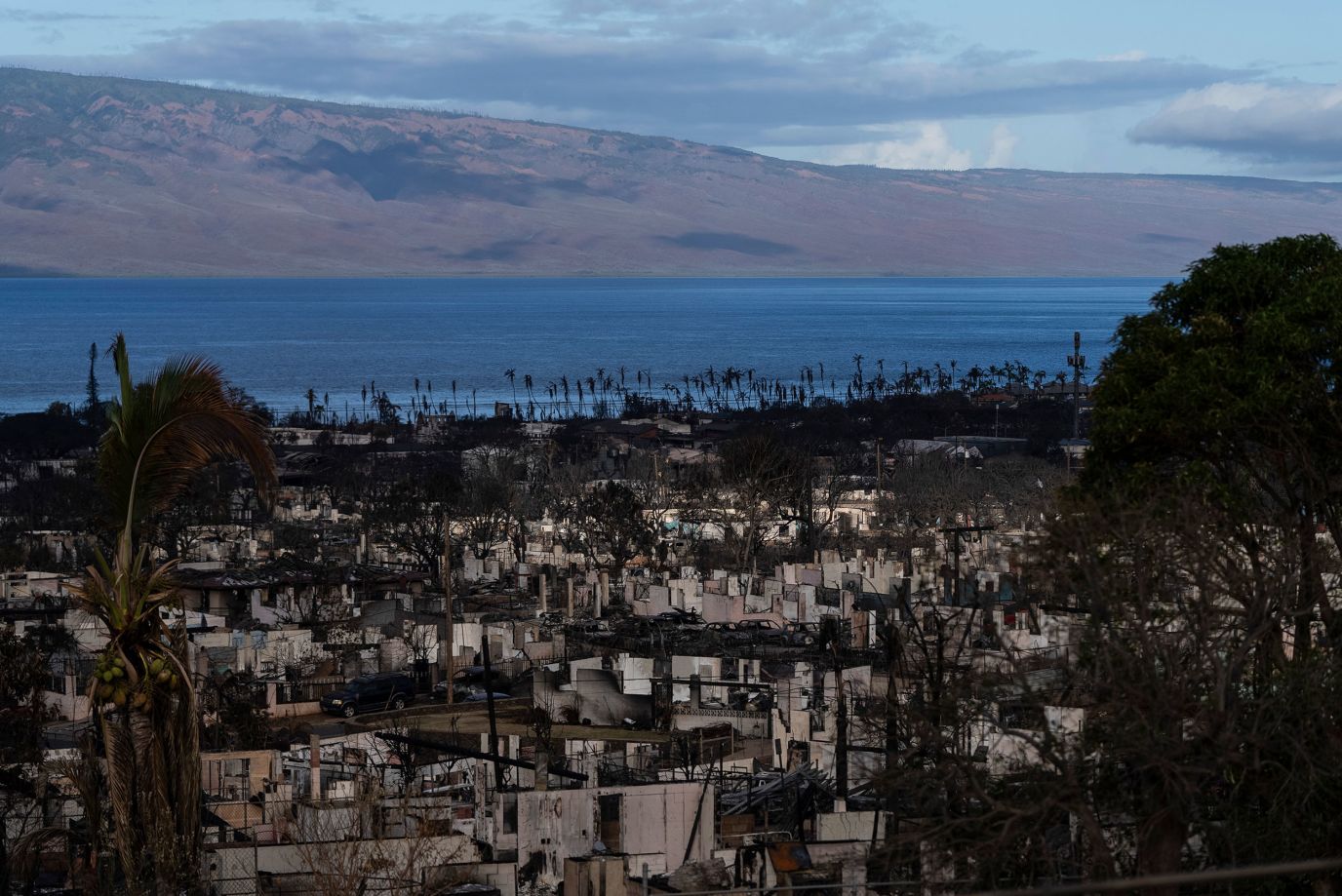
After The Fire: Rethinking Tourism Impacts On Hawaii
In the aftermath of a deadly wildfire resulting in over 100 lives lost, Lahaina–a historical whaling town in Maui that was once the centerpiece of the Hawaiian monarchy–begins the difficult task of rebuilding.
While the island grieves what was lost and begins to pick up the pieces, native Hawaiians are urging local governments and individuals to address the systemic issue of tourism that has shaped the indigenous communities’ way of life in Hawaii. While the future of Maui is uncertain following the fires, a revitalization of the effort to preserve and rebuild the culture, land, and history of Hawaii offers a hopeful future to native communities.
In August, a series of high winds from Hurricane Dora, along with low humidity and a drought spell, put Hawaii under warning for conditions that foster wildfires. Shortly afterward, on the morning of August 8th, a devastating fire broke out and forced the evacuation of thousands, displacing the community and ripping through Lahaina. The land was a tinderbox set ablaze–hundreds of acres incinerated from the fires, and a multitude of churches, temples, and cultural sites that represented the history and culture of Hawaii were destroyed. Generations of native Hawaiians watched as their land was stripped from them again, with little to recollect. Lahaina’s 150-year-old Banyan tree , a generational symbol of prosperity and hope, was engulfed in flames as the town burned.
Wildfires on the island, though not uncommon, have never reached such catastrophic levels in the past–but Maui has changed both economically and environmentally . Though the cause of the wildfire is considered unknown, both residents and local officials raised concerns regarding the increased impact of climate change, as what was once a wetland has been struggling with severe drought. Native plants are no longer able to retain nutrients that create a damp and humid environment, where wildfires struggle to spread as quickly. Coupled with the drought is the introduction of non-native plants brought by colonizers that are highly flammable . These concerns about climate change have been brought alongside claims that Hawaiian Electric, the operating company of Maui Electric, did not ensure that proper safety measures and emergency procedures were established ahead of the storm and risk of wildfire. Together, these factors brought about a condition in which the wildfires were able to prosper, devastating the land and the people.
As the Banyan tree begins to sprout again and turn over a new leaf in the conversation of who owns Hawaii, the entirety of Lahaina faces the deadly consequences caused by destruction from the fires. The aftermath has spread roots of uncertainty all throughout the island, with natives struggling to conceptualize the loss and the local government pleading with visitors to reconsider their vacation plans . Hotels were converted to shelters for residents who were evacuated and displaced, with an estimated 46,000 individuals flying out of Maui on the day the fires broke out. Maui halted most visitors from entering, with many local Hawaiians stating that the island needs time to recover and grieve the lives and communities that were lost. The road to repair is lighting a spark in natives emboldened by the loss to regain control over the land. Maui’s wildfires and the devastation that impacted Lahaina are reigniting the conversation about the exploitative nature that Hawaii’s tourism industry has fostered.
Since the establishment of Hawaii as a state in 1959, the land has been used to support its tourism industry, which has grown exponentially. Since then, the impacts of the human footprint and climate change have in turn exploited its natural environment. Visitors to the island reach numbers in the millions every year. As hotels, resorts, and businesses owned by large-scale corporations continue to drive up housing prices and pay poor wages, residents have become unable to afford their homes and are forced to abandon their land, which is then often bought by billionaires like Oprah Winfrey and Jeff Bezos . These issues didn’t arise overnight–they stem from the structured gentrification of Hawaii that financially and physically displaced the native population while portraying it as a way to economically benefit the island’s communities.
When Hawaii was harvested for its rich agricultural resources, particularly sugar, the island and its natives began to lose independence as a nation. The result was a drift towards a for-profit economy bolstered by white settlers that profited from colonialism enacted against native peoples and their land. After the overthrow of the monarchy and annexation of the island, the result was a series of political and economic leverages used against the native community, backed by powerful sugar lobbyists who were instrumental in taking control of the land. As indigenous communities were regarded with suspicion and tasked with proving loyalty to the United States during World War II, colonialism flourished and grew exponentially. The result was stripping away indigenous communities’ self-determination and capitalizing off the obstacles natives faced in order to develop and maintain Hawaii’s economic advantage through the tourism industry.
Maui, in particular, has been a hotspot for tourism–its economy relies on the tourism industry for more than 80% of its wealth, and resorts welcome as many as 8,000 individuals per day. Taxes and revenue from the hotel industry are fed right back to supporting the expanding service industry. This creates a repetitive and vicious cycle of consumption culture , where the indigenous society is buried under the weight of tourism. Following the relaxation of pandemic restrictions, local infrastructure has suffered from the surge in visitors that heavily burden public services, including roads, businesses, and the natural landscape. Streets are closed because of overcrowding, natives face egregious fines for basic water consumption, and profit-driven pollution has compromised the environment.
Visitors often leave long-lasting impacts on the land through extreme water usage at hotels and luxury golf courses built by distant investors. Investment in Hawaii would be better aimed at environmental impact mitigation and housing solutions, such as the Hawaii Tourism Authority’s hope to reinvest 2.7 million dollars into the culture and community.
Decades of colonialism in partnership with tourism and over-development have marginalized and disregarded the indigenous communities in Maui, promoting an unethical economy that is detrimental to Hawaii’s future in the aftermath of the fires. As described by Kaniela Ing , a seventh-generation Native Hawaiian from Maui, “black, brown, and low-income communities. . . have contributed the least to climate change, but have suffered the most”. As demonstrated by this longstanding exploitation, the balance between the ethical enjoyment of Hawaii and the preservation of its history has become increasingly hard to manage. While Maui relies on its tourism infrastructure and the use of natural resources to generate revenue, native Hawaiians are begging for the island to shift in a direction Ing describes as “redefining what Hawaii stands for”.
Visiting Hawaii should be more than just an aesthetic experience treated like a “paradise” when the people and communities do not share these benefits. A continuous effort has been made to educate tourists and individuals about the tangible impacts of the tourism industry. Groups like DeTours have been operating since 2004, allowing visitors to tour the island through the perspective of local Hawaiians and their communities. The group is part of a larger movement in acknowledging the turbulent relationship between the tourism industry and Hawaii, allowing people to visit old neighborhoods, the Hawaiian royal residence, and Pearl Harbor. By visiting these locations, people are able to understand the larger context of historical colonialism and its abuses while learning about the significance of their impact as tourists.
Repeated exploitation has fostered a reliance on tourism throughout the island. Hawaiian businesses, employment opportunities, housing, and infrastructure are all aimed at the preservation of tourism. Lahaina and its community, in the days following the fires, have begun to imagine a life outside of the realm of an industry that has shackled Hawaii to its colonialist history. To some, the fires provided a wake-up call to the direction that non-native Hawaiian opportunists have been running in–favoring the island’s profit over its people.
Investors and the service industry should no longer be building the framework of Hawaii. Rather than investing in golf courses, resorts, and attractions that ruin the land and foster consumption culture, we should encourage a new sense of leadership and drive in the restoration of Maui. Despite the imminent need for resident housing, Hawaii continues to favor short-term rentals designed for vacation-goers. The burden of this is placed entirely on natives, who spend an average of 23 years waiting for housing through the Department of Hawaiian Home Lands. As a result, natives are twice as likely to be homeless, forcing many to leave the state and abandon their land. Housing should be developed for long-term residents and have immediate results for locals whose land has been taken from them. The wildlife and island should be protected and preserved, with indigenous communities at the forefront of this conversation, receiving help and support from both federal and local governments. The same concerns were raised when the development of a telescope on Mauna Kea sparked criticism from local Hawaiians. Through advocacy and engagement with organizations like the Hawaii Land Trust (HILT), individuals and communities are able to participate in reducing the impact of climate change through wildlife conservation, coastline protection, and outreach in educating people about the land. Since the beginning of HILT, the organization has conserved thousands of acres of land, all through their volunteer program which is aimed at engaging and assisting the native population in their effort to reclaim land. Community-oriented spaces and projects like HILT promote the construction of public services and preserve culture, allowing Maui to be restored to what it once was before–a home.
As the island begins to heal and the leaves of the sacred Banyan tree flush out the ash created through decades of occupation and colonialism, now more than ever individuals should acknowledge and educate themselves on the impact that tourism has had on Hawaii.
There’s hope that in the aftermath of the fires, tourists and locals will embrace collective responsibility. After the detrimental effects of an unethical economy, Hawaii is beginning to break free from historical exploitation, sprouting hope and opportunity for the natives. A future in which Hawaii is constructed by indigenous culture and history can uproot the deep-seated issues of colonialism that have followed the natives and their land, allowing indigenous communities to grow and flourish after decades of economic and social suffocation caused by tourism. It’s evident that tourism has negatively impacted Hawaii both socially and environmentally, and the fires are a pivotal point in restoring and reclaiming native lands. While the future of Maui is uncertain following the fires, a revitalization of the effort to preserve and rebuild the culture, land, and history of Hawaii offers a hopeful future to native communities.
Featured Image Source: CNN
Published in United States
- climate change
- United States
Comments are closed.

- Out Traveler Newsletter

Search form
By continuing to use our site, you agree to our Private Policy and Terms of Use .
Tourism Takes A Toll on Native Hawaiians, But Here’s How You Can Help
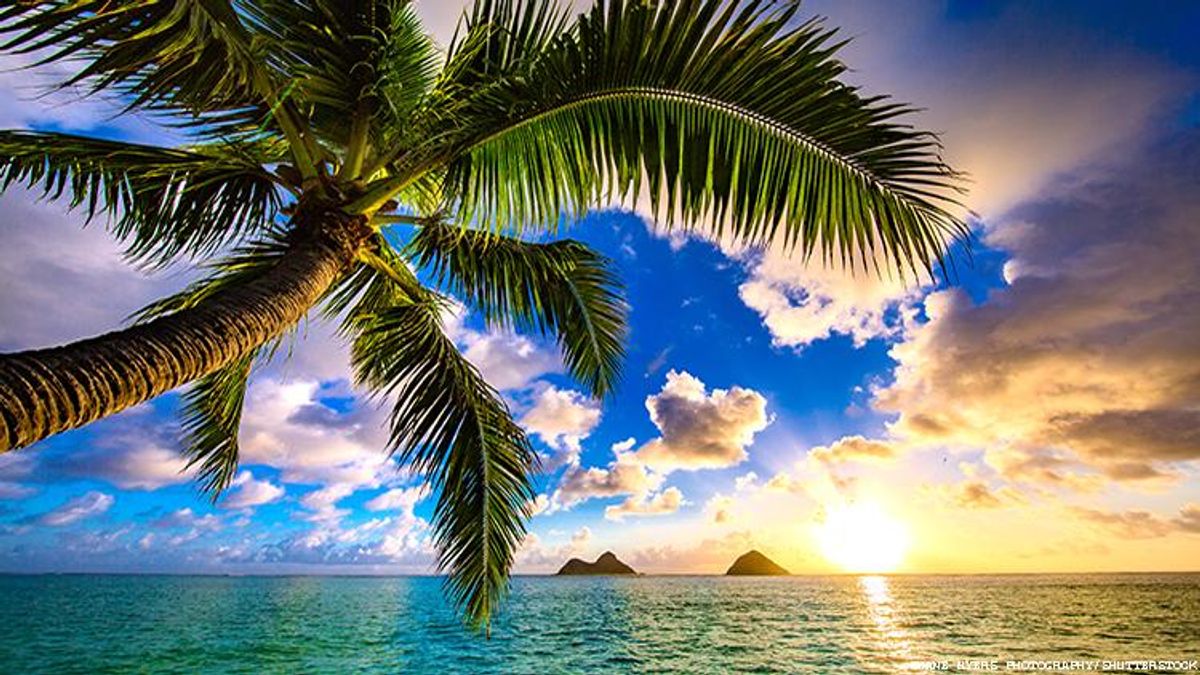
Enlightened entrepreneurs and activists seek to make tourists more aware and responsible.
(CNN) -- The Hawaii most tourists see is one of azure waters and towering resorts, of “aloha” and “ohana,” and “hula.”
But as it exists now, the powerful tourism industry dictates the lives of Native Hawaiians, often for the worse, said Kyle Kajihiro, a lecturer at the University of Hawaii at Mānoa and activist for the rights of Native Hawaiians.
The tourism industry in Hawaii powers its state revenue, but that reliance on tourism has resulted in Native Hawaiians getting priced out of their homes, climate change wreaking havoc on the natural landscape, and a lack of respect for the 50th state that is also the ancestral land of more than half a million people.
“I think that it is too easy for people to visit places like Hawaii,” Kajihiro said. “It conditions visitors to feel entitled.”
The industry must change to improve the futures of Native Hawaiians, Kajihiro told CNN . He’s one of several residents who have worked to educate visitors and return some elements of Hawaiian culture to the people from whom it originated. If visitors to Hawaii decenter themselves and instead take with them respect and a willingness to learn -- or choose not to visit at all -- then Hawaii may be preserved for the people who have called it home for centuries, activists say.
For many residents, living in Hawaii is no vacation
Tourism is Hawaii’s largest single source of private capital, per the Hawaii Tourism Authority . Even amid the Covid-19 pandemic, it remains incredibly lucrative: In April alone, visitors to Hawaii spent over $1 billion in the islands, according to a state report marking the recovery of tourism since the start of the Covid-19 pandemic.
But what’s profitable for Hawaii’s economy can negatively impact the lives of Native Hawaiians and yearlong residents. To combat drought conditions, residents last year were asked to reduce their water consumption or face a fine while large resorts continued to use far more water. There are millions more annual visitors than there are permanent residents – in 2021, there were more than 6.7 million visitors compared to 1.4 million residents – which can cause carbon emissions to surge and overuse of its beaches, hiking trails, and other natural wonders. Hawaii has even been called the “ extinction capital of the world ” for the number of species who’ve gone extinct or are at high risk of dying out.
It also has the highest cost of living in the nation, partly due to the state having to import around 90 percent of its goods. Its housing market is one of the most expensive in the country, ProPublica and the Honolulu Star-Advertiser reported in 2020, and with a large demand for land and a limited amount of it, Native Hawaiians can spend decades waiting to reclaim ancestral land, leading some to move from the islands.
“Tourism normalizes and conceals the current dystopian reality experienced by many Kānaka Maoli and the poor immigrant communities in Hawaii,” Kajihiro told CNN . (Kānaka Maoli is the Hawaiian-language term for Native Hawaiians.)
To empower Native Hawaiians and return some of their rights, the tourism industry needs to change, beginning with its ethos, Kajihiro said.
‘DeTours’ show the real history of Hawaii beyond the beach
In an effort to reclaim the histories of Hawaii and educate residents and visitors about the impacts of colonization, militarization, and tourism, Kajihiro created the Hawai’i DeTour Project. The program, which he runs with lifelong activist Terrilee Kekoʻolani, aims to “interject a more critical historical account of Hawaii” in hopes that it’ll start conversations about social responsibility and create solidarity with social justice and environmental activist efforts in Hawaii.
Kajihiro leads DeTours to locations like downtown Honolulu to discuss Hawaii’s former sovereignty; to Iolani Palace, where the US supported a White settler-led coup against Queen Lili’uokalani; to military landmarks like the Pearl Harbor memorial to discuss American efforts to transform parts of Hawaii into military strongholds.
Though Kajihiro doesn’t advertise his services, visitors are increasingly seeking them out. While he prioritizes educational and political groups that can help create change locally, he has seen both residents and visitors on his tours, some of whom go on to become involved in the causes he highlights.
“I guess it could be seen as a good sign that people want to learn and be more responsible as travelers,” he said. “But there are also many people who simply want the novelty of a ‘reality’ tour or seek to assuage their guilt by doing a more ‘socially responsible’ tourism. I'm not interested in giving people permission to visit Hawaii guilt-free.”
One way to support Native Hawaiians is to not visit at all, some say
Two educators in Hawaii borrowed the name of Kajihiro’s operation for their book, which also shares his principles. Detours: A Decolonial Guide to Hawai’i , co-edited by Vernadette Gonzalez and Hōkūlani Aikau, is no ordinary guidebook – it’s a call to action.
The book is designed to educate readers about Hawaii’s past and present and the negative impacts of colonization, militarization, and tourism. Even if readers never make it to Hawaii, the stories transport them to some of the sites Kajihiro leads his groups to. In the introduction to the book, Gonzalez and Aikau write that not all readers will be “invited or allowed to go to all of the places that are described,” and some locales were left out entirely because they’re “not meant for outsiders.”
Many tourists’ relationship to Hawaii is an extractive one, Gonzalez and Aikau write, and that relationship must shift to one of support if the Hawaii tourists know and the Hawaii its residents live in are to continue to exist. Even better, they write, would be choosing not to vacation in Hawaii at all.
“Sometimes the best way to support decolonization and Kanaka ‘Ōiwi (Native Hawaiian) resurgence is to not come as a tourist to our home,” the editors write.
Improving tourism begins with respect for the islands and Native Hawaiians
Of course, there will always be tourists in Hawaii as long as it remains the islands’ top industry, and as long as its beaches beckon to guests with deep pockets. The nonprofit Sustainable Tourism Association of Hawaii connects tourists with local attractions that emphasize cultural and environmental responsibility. The Coconut Traveler, a travel company created by Debbie Misajon, the granddaughter of Filipino immigrants who moved to Hawaii to work on sugarcane plantations, is aimed at wealthy guests and charges a responsible tourism fee, 100 percent of which goes to local organizations that work to sustain Hawaii’s natural beauty. Recentering the focus of a trip to Hawaii from the guest to the island and its residents might lighten the footprint a tourist leaves there, Misajon told CNN.
“I'm all for coming and enjoying the islands, but (I) encourage people to find ways to be part of the solution,” Misajon said. “It might be trite, but spend your money locally.”
Making fundamental changes to the tourism industry should begin with returning rights to Native Hawaiians and letting them decide how they want their culture to be shared and consumed, if at all, Kajihiro said. There’s already a model of this in New Zealand, where the Māori people have control over how their culture is represented and experienced by tourists, he said, with an emphasis on mutual respect.
“Let’s abolish the word ‘tourism,’” Kajihiro said. “The very term privileges the consumer, the act of consuming places, and the transactional relationship.”
Instead, he said, visitors should “rethink travel as entering someone else’s home.” Someone who’s a guest at someone else’s home may bring a gift with them or express their gratitude to their host in other ways, he said.
“As a visitor, you have the burden to learn, act responsibly, not be a burden and respect your hosts,” Kajihiro said.
The-CNN-Wire ™ & © 2022 Cable News Network, Inc., a Warner Bros. Discovery Company. All rights reserved.
Want more breaking equality news & trending entertainment stories?
Check out our NEW 24/7 streaming service: the Advocate Channel!
Download the Advocate Channel App for your mobile phone and your favorite streaming device!
APPLE STORE - GOOGLE PLAY
ROKU - APPLE TV - FIRE TV - GOOGLE TV
From our Sponsors
Most popular.
Ron Amato Retrospective: 75 Gorgeous Images of Queer Men
Updated: here are the final 27 surviving lesbian bars in the u.s., turkish oil wrestling: male bonding at the kirkpinar festival, the 13 least visited national parks, just in time for pride – the 15 gayest cities in the world in 2023, onlyfans star reno gold on his new boyfriend and travel show, here are the best gay sex and male nudity scenes in 2022, get soaked with these 35+ steamy pool pics from this year’s white party, 12 years of intimate photos of same man - taken by his partner, slovakian jocks with nothing to hide, latest stories, ugandan lgbtq+ activist stabbed, left for dead, escapes to canada.
Adult entertainment icons Derek Kage & Cody Silver lead fight for free speech
'drag race's morphine declares miami a certified drag capital, spring into the pride store’s top new arrivals for april, the incredible ‘sacred’ waterfall you probably never knew existed, exclusive: lady bunny cuts ties, sues bianca del rio, equalpride's ceo on standing together this transgender day of visibility, 30 steamy pics of out celebrity stylist johnny wujek, go green with envy with 70 pics from sidetrack chicago's st. patrick's day party, here's everything you missed at beyond wonderland socal from a gay man's perspective, 35 burly & beautiful pics from bear troop 69's inaugural bear jamboree at gay disney , breaking boundaries in gender-free fashion with stuzo clothing, pete buttigieg commits federal resources to baltimore bridge collapse recovery, update: former police chief among three new arrests in queer politician's murder, vine clips of 'drag race' s16 queens = cackling good times, find your perfect fit with gender-inclusive fashion from the pride store, jesse tyler ferguson as he shares his travel experiences and culinary delights on "out and about with...", cruise ship fire at sea: lightning strike suspected, 35+ mouthwatering pics from weho's big queer food fest, prohibition wellness & revolutionizing self-care for all, trending stories.

Gay gym culture has a deadly downside

‘For the Love of DILF’s winners Nigel & Rico open up about their romance after the show (EXCLUSIVE)

Nashville PD Must Pay HIV-Positive Man Denied a Job

Tia Kofi & Hannah Conda dish on 'DRUKvTW' secrets, rivalries & have us CACKLING

Scarlet fever: exploring our fascination with blood

France becomes world’s first country to enshrine abortion rights in constitution

Why most GOP women are standing by their man

The Fall of the House of Ziegler: Moms for Liberty, a threesome, and a failed political dynasty

All 6 rogue Mississippi cops got long prison sentences in 'Goon Squad' torture of 2 Black men
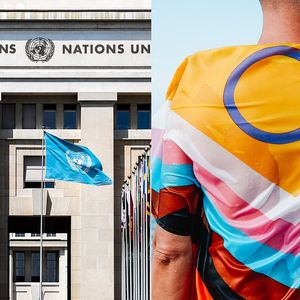
United Nations adopts historic, first-ever resolution on rights of intersex people

Exclusive: Stars shine bright at Elton John's AIDS Foundation Oscars party

Kansas Senate minority leader on recent anti-LGBTQ+ legislation: ‘It’s just filled with hate’

A timeline of every winner of 'RuPaul's Drag Race' around the world

Oklahoma voters recall white supremacist, reject supporters of Ryan Walters

Not to be outdone by Trans Day of Visibility, Trump weirdly declares ‘Christian Visibility Day’

Jan calls out disgraced 'Drag Race' queen Sherry Pie's attempts at making a comeback

8 dating tips for gay men from a gay therapist


Trinity The Tuck chimes in on the 'Drag Race' Season 16 tucking debate (EXCLUSIVE)

10 reasons why we STAN Pedro Pascal to celebrate his birthday

Meet Katy O'Brian, breakout star & heartthrob of 'Love Lies Bleeding'

How climate disasters hurt mental health in young people

'Drag Race' star Q shares she's living with HIV

The trailer for this year’s coolest, queerest show is here and we’re already under its spell

Joe Biden has tied the record for most LGBTQ+ judges confirmed in federal courts

19 LGBTQ+ movies & TV shows coming in April 2024 & where to watch them
Most recent.

Opinion: I'm a climate scientist. If you knew what I know, you'd be terrified too

Happy national foreskin day!

Trump is no longer dog whistling and the internet is ruthlessly ROASTING him — as they should be

Which of our fave characters were forced to be in hetero couples? Here's what the internet thinks

Election season got you down? This crisis line is soothing LGBTQ+ mental health

King Tyra thinks Beyoncé took his idea for a 'Texas Hold 'Em' remix

Here's why 'Drag Race' fans think Mistress just came out as nonbinary

Federal judge grants Casa Ruby founder Ruby Corado pre-trial release from D.C. jail
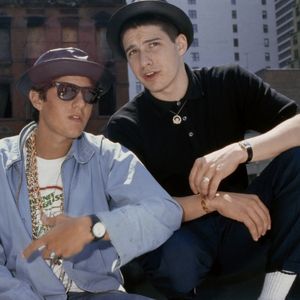
This iconic hardcore band once helped a trans friend pay for her surgery

14 queens who quit or retired from drag after 'RuPaul's Drag Race'
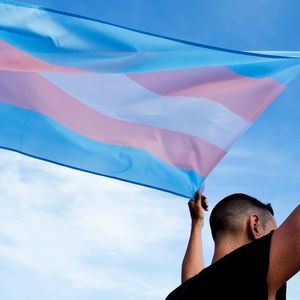
Celebrating trans resilience on TDOV—and beyond

Lara Trump awkwardly blames Biden’s support of trans people for high gas prices and Israel-Hamas war
Common has a message on how to foster self-love

LGBTQ+ patients twice as likely to face discrimination: survey

Bud Light boycott likely cost Anheuser-Busch InBev over $1 billion in lost sales

'Matrix 5' is in the works, and Lana Wachowski is back — but not as director

25 queer actors who should be starring in EVERYTHING

16 Republican AGs threaten Maine over protections for trans care and abortion

RuPaul reveals which actor should play him in a biopic & we're gagged
Recommended stories for you, scottie andrew.
- The Journal
- This Month: Voluntourism
- What is Impactfull?
- Join Impactfull
- 2022 Olympics
- Migrant Farmworkers
- Income Inequality
- Plastic Waste
- Climate Refugees
- Environment
- Social Enterprise
- Disaster Relief
- Partnerships & Press
- Editorial Standards
The Drawbacks of Tourism: Native Hawaii’s Environment, Culture, and Economy
- September 11, 2020 June 28, 2021
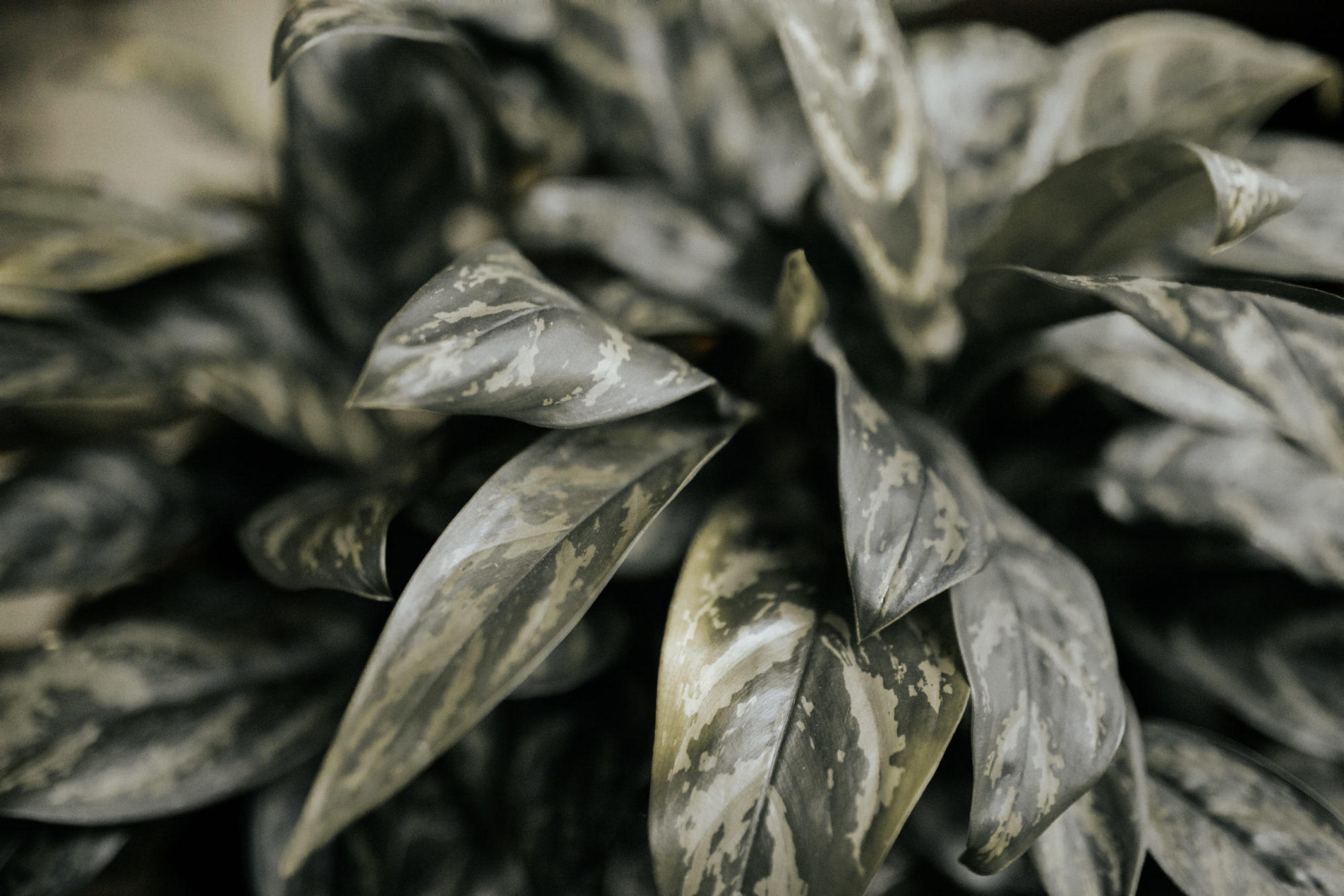
When you picture the perfect vacation, what do you see? Palm trees, beaches, and resorts?
We’ve all been there, getting home from a long day of work or class and wishing to be somewhere else. However, for the people living in these places year round, the experience is likely very different. Urbanization and the tourism industry have brought economic and travel activity to places like Hawaii, but for many native people this rapid change has significantly impacted their way of life.
Urbanization is the process through which people transition from living in rural areas to living in cities, but for many popular vacation spots, urbanization means more than that. The key difference in this case is the tourism industry. This industry generally operates on a basis of consumption rather than production or commerce. As resorts and vacation towns pop up in places like Hawaii, tourists come seasonally, and the environment, economy, and culture of the towns change with them. Is hawaii open to tourists?
Environmental Impact: Farmland & Groundwater
Although many appreciate experiencing the beauty and culture of the Hawaiian islands, their stays are likely more detrimental than they would have hoped. As the tourism business grows, the use of resources grows with it. These small islands rarely have the resources or land capacity to sustain the amount of tourism that they bring in. The development of infrastructure on many of these islands had led to an environmental degradation crisis, which in turn impacts the native wildlife. Over 44 percent of the United States’ endangered species are native to Hawaii, and the farmland has become less fertile over the past few decades.
Because these resorts are focused on consumption rather than sustainable commerce, most tourist waste inevitably gets flushed into the ocean or winds up in groundwater that is used as drinking water for many Native Hawaiian communities. There are now residential areas where county water is not available, and many native Hawaiians have been pushed out of the fishing industry due to decreased marine activity. Also attributed the overuse of land, many Hawaiians have been seen foreclosures on property and been forced off of their land as a result of a new golf course or resort being built. According to Kaleo Patterson , a member of the Ecumenical Coalition on Tourism, “it has been a very common pattern that displaced Hawaiians on every island have found their way to remote beaches only to be forcibly evicted after a few years.”
One recent encounter between corporate tourism and Hawaiian communities illustrates these conflicts. In late 2019, Tropic Lands, LLC petitioned to buy 96 acres of farmland in Wai’anae with the intent of building an industrial park. Not only would this have displaced many local farmers, but the waste from the construction and use of this industrial park would have been damaging to the surrounding farmland as well. Prior to this petition, Tropic Lands, LLC had talks of establishing a municipal waste site on land in similar proximity to these farms. Both of these plans would have severely damaged the farmland and impoverished the well-established Wai’anae community. Although the community was able to come together and protest these projects, this is an example of what can happen with the “urban creep” of tourism.
Cultural Impact: Language & Dance
Hawaiian culture has also suffered as a result of increased tourism. With the infiltration of stereotypical “American” culture and governance, fewer Hawaiian children speak the native Hawaiian language. Those that do continue to speak Hawaiian often use English as a default due to the large influx of tourists and other Americans living in Hawaii.
Many tourists love to see the Hula, a traditional Hawaiian dance that is now performed at numerous hotels and resorts. Hawaiians have complained that the Hula has been sexualized and has lost its religious meaning due to how it has changed to meet tourists’ expectations. According to Haunani Kay Trask , critic of the Hawaiian tourism industry, “the sacredness of the dance has completely evaporated while the athleticism and sexual expression have been packaged like ornaments.”
Economic Impact: Industry and Housing
Outside of cultural changes brought about by tourism, the economy has experienced change as well. You might think that tourism would be helpful to Hawaii’s economy, and to some extent you would be right. It stimulates the economy and benefits businesses that make profits. But tourism has established itself in Hawaii as not only the biggest but also the lowest paid industry employer. As Hawaii’s vacation popularity has skyrocketed, so has the cost of housing. The average “ single family home price on Oahu has reached 750,000,” a price that is almost impossible for tourism workers to afford. This has resulted in a majority of the native community being “priced out,” or pushed into impoverished neighborhoods far away from tourist attractions. These areas are usually void of public transportation and other public amenities. Kayte Jones, a writer for the Honolulu City Beat, said it best when she said “no one invests in locals, the people that actually live here. We only build nice things for tourists.”
What can you do?
While everyone enjoys a tropical vacation, we cannot ignore the impact that our tourism habits can have on the Hawaiian people and their culture. We must make a conscious effort to support these communities and make sure that our own actions don’t negatively impact others. So what can we actually do?
- Do your research. If you are planning on taking a trip to Hawaii, make sure to do it in a way that is sustainable. While you are there you can support local businesses and restaurants, stay in eco-friendly hotels and resorts, and use local homestays and programs.
- Donate. There are many organizations that are advocating for sustainable tourism, fighting for environmental justice, and working to preserve Hawaiian culture. Consider donating to organizations like The Sustainable Tourism Industry of Hawaii and Kahea, the Hawaiian-Environmental Alliance .
- Learn more about the impact of tourism by reading articles from The Honolulu Civil Beat , the Hawaii Tribune-Herald , and other news sources.
- If you are looking for a long-term stay, consider volunteering or looking into programs like GoFarm Hawaii . These offer sustainable stays that help local communities and put money into the local economy, as well as increase the amount of local producers.
environmental justice, hawaiian tourism, hawaii
- Recent Posts
- Native American Natural Lands and Resources: How They are Exploited and What Can Be Done - January 11, 2021
- China and the Petroleum Industry Revisited: Solutions, Replacements, and Innovation - December 1, 2020
- How Redlining Affects Health, Civil Rights, and More - November 18, 2020
Leave a Reply Cancel reply
Your email address will not be published. Required fields are marked *
This site uses Akismet to reduce spam. Learn how your comment data is processed .
Turn your activism into impact!
Get exclusive content in your inbox each Monday.
No spam, we promise– just our best articles.
International Development News, Features, and Opinions

Over Tourism: Native Hawaiians Pay the Price
Hawaii is suffering from the economic, environmental, and social consequences of overtourism. This problem especially impacts Native Hawaiians, who find themselves outnumbered by tourists 30 to 1 and find their needs drowned out by the schemes of multinationals seeking ways to capitalize on the state’s natural beauty. Necessities like clean water, affordable housing, the preservation of the environment and native culture are being pushed aside in the name of economic gain. The reliance on tourism undermines the diversification of the Hawaiian economy as well as the success of community based economic planning. For native Hawaiians, this leads to an inability to maintain traditional livelihoods. Tourism has led to the deterioration of the environment as well as struggles to preserve cultural traditions. To put tourism dollars back in the pockets of locals, visitors can make an effort to shop, dine and stay at locally owned businesses. However, individual efforts can only go so far and the state must take steps to modify tourism practices overall to prevent further environmental and cultural degradation.
Hawaii’s economy is dependent on revenue from the tourism industry, but investments come mainly from corporations in mainland US and Japan . These corporations exclude Hawaiians from business decisions, and rarely distribute any of their wealth to Hawaiian residents. Those involved in the tourism industry accumulate wealth and rarely distribute it to you Hawaiian residents. Approximately ⅕ of Hawaiian residents classify as near-homeless, despite the state bringing in 4.86 billion in visitor spending in the first six months of 2021. Foreign investments that fund the tourism industry drive up inflation and increase the cost of living on the island. In Maui, the median price of a home is over $1 million , but the per capita income in Hawaii was $36,989 in 2019, leaving native Hawaiians to struggle to afford the cost of living. Vacation rental companies like Airbnb also contribute to this situation.
The tourism industry is dependent on Hawaii’s natural beauty, but it is simultaneously destroying it, creating an inherently unsustainable system. Overtourism is a major contributor to environmental degradation. The overdevelopment of Hawaii’s natural environment has led to the endangerment of many plant and animal species . Hawaiians are vocal about tourist’s lack of respect for the land and disregard for laws aimed at protecting the wildlife. Overcrowding of beaches can lead to excessive stirring of sand and an accumulation of sedimentation that harms coral colonies. Invasive species introduced by frequent travel pose another threat to local wildlife, as well as over-development and littering. While tourists flock to Hawaii to enjoy the natural beauty, their visits are contributing to its destruction. In order for both the industry and Hawaii’s wildlife to survive, a more environmentally friendly path needs to be forged for the future of tourism.
In terms of resources, the water needs of mega-resort complexes surpass those of residents, some of whom struggle to access enough water for their homes. Maui’s water diversions, created after colonization in favor of big agriculture and to the detriment of subsistence agriculture, are still in use today. Food insecurity increased following these water diversions, and residents wonder how resorts are being sanctioned with massive pools and water needs while Hawaiians water needs are going unmet. Citizens are requesting the rebuilding of inefficient reservoirs as well as the democratization of irrigation systems as solutions to this problem.
Indigenous communities are harmed by the commodification of authentic cultural values and practices and their misrepresentation for the sake of the tourism industry . Native Hawaiians struggle to preserve their culture as their sacred burial sites and other important landmarks are disrupted by the industry . The difficult economic conditions have also led to the disruption and diaspora of Hawaiians seeking more affordable living elsewhere. Tourism is also a notable factor in the crime rate , which endangers residents. This could be due to a temporary increase of people in small areas as well as the frequent introduction of outsiders into local communities, leading to a correlation with a rise in crimes against property and people. Educating visitors about the cultural values of Hawaiians and respectable customs can decrease the harm on native communities. For example, visitors must learn to respect that they may not always be granted permission to visit their sites of interest due to environmental or cultural reasons, and should be respectful of private property and of residents, especially at religious or historical sites.
To reduce the negative impacts of the tourism industry in Hawaii, tourism itself needs to be reduced to a more reasonable rate, which can be done by slowly decreasing flights. This is a complicated issue, considering tourism generates 23% of local economic activity in Hawaii. In order to decrease the reliance on tourism, the economy needs to be diversified with an increased reliance on the non-tourism economy. Cooperation between tourism corporations and the Hawaiian government is essential if the situation is to be improved. Improving the general business climate can encourage residents to start businesses, which would in turn decrease reliance on tourism. This can be done in many ways, including improving the public education system. Local businesses should be promoted so that tourism can be slowly reduced without harming Hawaiian’s ability to make a living.
Tourism was introduced in Hawaii as a means to diversify the economy, and instead became the center of the economy, destroying the land and livelihoods of the residents. While offshore investors in the tourism industry are reaping the rewards of the exploitation of the land and culture, native residents struggle to get their share. The needs of Hawaiians are pushed aside to grow the tourism industry and put money into the pockets of large organizations rather than the community. Tourism to Hawaii in its current form is inherently unsustainable, and practices must be modified to protect the natural beauty and culture that make it such a popular destination. When visiting, tourists should be aware of these issues and vote with their dollars by prioritizing local businesses so that Hawaiians can reap the benefits of the industry that exploits their land and culture.
Edited by Sofia Idris
Katie is in her first year at McGill, pursuing a double major in Psychology and Political Science. She is particularly interested in topics of feminist and environmental issues as well as sustainable development.
One thought on “ Over Tourism: Native Hawaiians Pay the Price ”
You are an incredible artist.
Leave a Reply Cancel reply
Your email address will not be published. Required fields are marked *
Save my name, email, and website in this browser for the next time I comment.
Tourisms Negative Impact on Native Hawaiians
- 1985 65,000 rooms
- 1990 76,500 rooms
- 2010 132,000 rooms
- 1989 5.75 million/year
- 2010 11.50 million/year
today your words are empty sucking dry the brown dust left by earth and sky patches politely parched with no water flowing from the mountaintop scars burn on my soft skin youve cut a piece of me away leaving my bandaged heart to endure the pain of your trying me to yourself. Dr. Konai Helu-Thaman

Taxing Tourists to Generate Revenue to Address the Negative Impacts of Climate Change on Hawai‘i Natural Resources
- April 5, 2024
- Sumner La Croix , James Mak , Briefs , Tourism
Recent Posts
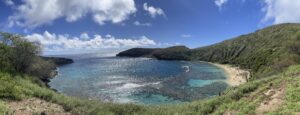
Threshold regressions for more objective urban and regional policies
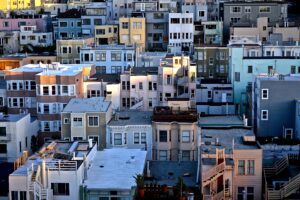
UHERO’s Justin Tyndall cited in the 2024 Economic Report of the President
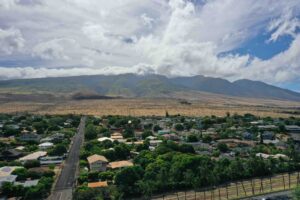
Delinquencies have spiked in the aftermath of the Maui wildfires
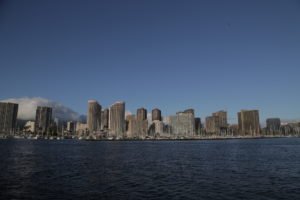
UHERO’s Byron Gangnes to be featured at HEA webinar
UHERO BRIEFS ARE CIRCULATED TO STIMULATE DISCUSSION AND CRITICAL COMMENT. THE VIEWS EXPRESSED ARE THOSE OF THE INDIVIDUAL AUTHORS. WHILE BRIEFS BENEFIT FROM ACTIVE UHERO DISCUSSION, THEY HAVE NOT UNDERGONE FORMAL ACADEMIC PEER REVIEW.
There is widespread agreement among Hawai‘i residents that the state government needs to spend more money on natural resource stewardship. A critical question is how best to pay for it.
In his January 2024 State of the State Address, Governor Josh Green said that “we must do more to protect our beaches, parks, and other natural treasures from extreme weather fueled by climate change—without raising taxes or fees on Hawai‘i residents”. He proposed to enact a Climate Impact Fee (hereafter “Climate Fee”) on visitors to provide the needed resources. HB2406 HD2 (and its companion bill in the Senate, SB3095) proposes to “Levy an additional $25 tax on transient accommodations.”
1 thought on “Taxing Tourists to Generate Revenue to Address the Negative Impacts of Climate Change on Hawai‘i Natural Resources”
They already have a fee, it’s called the TAT. About 15 years ago it was $100 million, it is now $1 billion. It used to be for tourism marketing and the convention center and now the legislature took all billion for whatever they want to spend it on. Spend it on climate change mitigation . Stop continually trying to take more and more money from tourist. The TAT is already the highest in the country.
Leave a Comment Cancel Reply
Your email address will not be published. Required fields are marked *
Don't subscribe All new comments Replies to my comments Notify me of followup comments via e-mail. You can also subscribe without commenting.
- Do not bully, intimidate, or harass any user.
- Do not post content that is hateful, threatening or wildly off-topic; or do anything unlawful, malicious, discriminatory or defamatory.
- Observe confidentiality laws at all times.
- Do not post spam or advertisements.
- Observe fair use, copyright and disclosure laws.
- Do not use vulgar language or profanity.
UHERO may amend this policy from time to time.
- 2424 Maile Way, Saunders Hall 540, Honolulu, Hawaii 96822
- [email protected]
- (808) 956-2325
- Department of Economics
- Social Science Research Institute
- College of Social Sciences
- Send me an update when UHERO posts new content
- Send me a monthly digest of UHERO content

IMAGES
COMMENTS
The increase of technology and transportation in the last half-century has led to the ease and availability of travel. The state of Hawaii offers warm climates, a cultural experience and extended leisure's to the ultimate travel consumer. While this growth has led to a prosperous economy, the impact it has had on the environment and Natives to ...
Compounded together, it makes sense that attitudes toward tourism have become more and more negative, hence the calls for a decrease in travel. According to the 2021 Hawaii Tourism Authority's ...
The virtue matrix is introduced--a tool to help executives analyze corporate responsibility by viewing it as a product or service and is used to examine why the public clamor for more responsible corporate conduct never seems to abate. Expand. 229. Semantic Scholar extracted view of "Negative Impact of Tourism on Hawaii Natives and Environment ...
Tourism is the biggest driver of Hawaii's economy, accounting for 21 percent of jobs. Nearly 10 million people visited the state in 2018 and in 2019, guest arrivals were expected to surpass that ...
Even though tourism plays a huge role for Hawaii businesses, and we could not survive without it. The negative environmental impacts of tourism could go down a list for ever! Tourism puts enormous stress on local land use, and can lead to soil erosion, increased pollution, natural habitat loss, and more pressure on endangered species.
In January 2022, the Hawaii Tourism Authority (HTA) marked the first time Native Hawaiians—kanaka maoli—comprised a majority of its 12-member board of directors. As tourism represents the largest industry in Hawaii, around 21 percent of the state's economy, this situation provided an opportunity for much greater influence and input from kanaka maoli on the policies that effectively ...
Tourism has been profitable for our state. However, the impacts of COVID-19 on tourism highlighted just how completely dependent our state is on tourism — and it's an unhealthy relationship ...
A few years ago, H.T.A.'s main job was to brand Hawaii and market the islands to potential visitors. The agency still does those things, but these days its official remit has expanded to include ...
of tourism's negative impacts to the environment and local communities as well as the sharing of opportunities for a vibrant exchange of people. David C. Brown and Jennifer Stange1 ... taking into account the economic, social, and physical impacts of tourism on the State, Hawaii's natural environment, and areas frequented by visitors;
Lethbridge, Alberta. T1K 3M4. Canada. 403-329-2265. [email protected]. Library Directory. The University is located on traditional Blackfoot Confederacy territory. We honour the Blackfoot people and their traditional ways of knowing in caring for this land, as well as all Aboriginal peoples who have helped shape and continue to strengthen ...
By Emily Carlton on October 25, 2023. In the aftermath of a deadly wildfire resulting in over 100 lives lost, Lahaina-a historical whaling town in Maui that was once the centerpiece of the Hawaiian monarchy-begins the difficult task of rebuilding. While the island grieves what was lost and begins to pick up the pieces, native Hawaiians are ...
I. PREAMBLE - IMPACT ON NATIVE HAWAIIANS: AN OVERVIEW I-1 Fair Reporting I-1 The Challenge I-1 The Business Model I-2 Historical Context I-3 Native Hawaiians and Land I-3 The Good News I-4 Sustaining Native Hawaiian Good Will I-5 II. TOURISM IMPACTS ON NATIVE HAWAIIANS: SUMMARY TABLE II-1 III. BEST PRACTICES
Going hand-in-hand with the degradation of the environment, the sacred and culturally important sites of Native Hawaiians are often bulldozed and paved over to make room for tourist sites or repackaged versions of their original native configurations (Stevens, 2018). ... Negative Impact of Tourism on Hawaii Natives and Environment. Darowski ...
August 18 2022 3:15 PM EST. (CNN) -- The Hawaii most tourists see is one of azure waters and towering resorts, of "aloha" and "ohana," and "hula.". But as it exists now, the powerful tourism industry dictates the lives of Native Hawaiians, often for the worse, said Kyle Kajihiro, a lecturer at the University of Hawaii at Mānoa and ...
However, to the native population, tourism mars the natural environment as well as their own homes. The continued struggle of land being taken dates back to origins of the Kingdom of Hawaii being overthrown by the U.S. government. Once Hawaii became a U.S. state in 1959, it became a tourist hotspot during the 1960s.
Cultural Impact: Language & Dance. Hawaiian culture has also suffered as a result of increased tourism. With the infiltration of stereotypical "American" culture and governance, fewer Hawaiian children speak the native Hawaiian language. Those that do continue to speak Hawaiian often use English as a default due to the large influx of ...
Hawaii is suffering from the economic, environmental, and social consequences of overtourism. This problem especially impacts Native Hawaiians, who find themselves outnumbered by tourists 30 to 1 and find their needs drowned out by the schemes of multinationals seeking ways to capitalize on the state's natural beauty. Necessities like clean water, affordable housing, the preservation of the ...
Executive Summary. Between 2017 and 2021, an average of 47,431 Native Hawaiians worked in tourism intensive industries per year. There was a slight decline in the number of Native Hawaiians who worked in the tourism sector (2.6%), and in the number of tourism sector workers overall (3.2%), compared to the 2015-2019 period.
Demographic Characteristics. From 2015 to 2019, 48,682 Native Hawaiians were employed in Hawaii's tourism sector, accounting for just under 20 percent of the 242,392 employees in the tourism sector at the state level. The male-to-female ratio among Native Hawaiian employees was the same as all workers in the tourism sector at the state level.
Tourism has a very negative impact on Hawaii's environment. As more people come to the islands, more people are trying to find ways to make money. One of these ways are marine tours. With these tours, many people feed the fish and harass them. Another effect of these marine tours is caused from sunscreen.
Tourism's Negative Impact on Native Hawaiians. Rev. Patterson is both a member of the Hawaii Ecumenical Coalition on Tourism and the Board of Directors of the North America Coordinating Centre of Responsible Tourism. This is an abridged version of a presentation made by Rev. Patterson to a March 1992 international tourism fair in Berlin.
Hawaii's reliance on tourism has resulted in Native Hawaiians getting priced out of their homes and havoc on the natural landscape. Activists say if visitors to Hawaii decenter themselves and ...
There is widespread agreement among Hawai'i residents that the state government needs to spend more money on natural resource stewardship. A critical question is how best to pay for it. In his January 2024 State of the State Address, Governor Josh Green said that "we must do more to protect our beaches, parks, and other … Taxing Tourists to Generate Revenue to Address the Negative ...
Hawaii Sea Grant